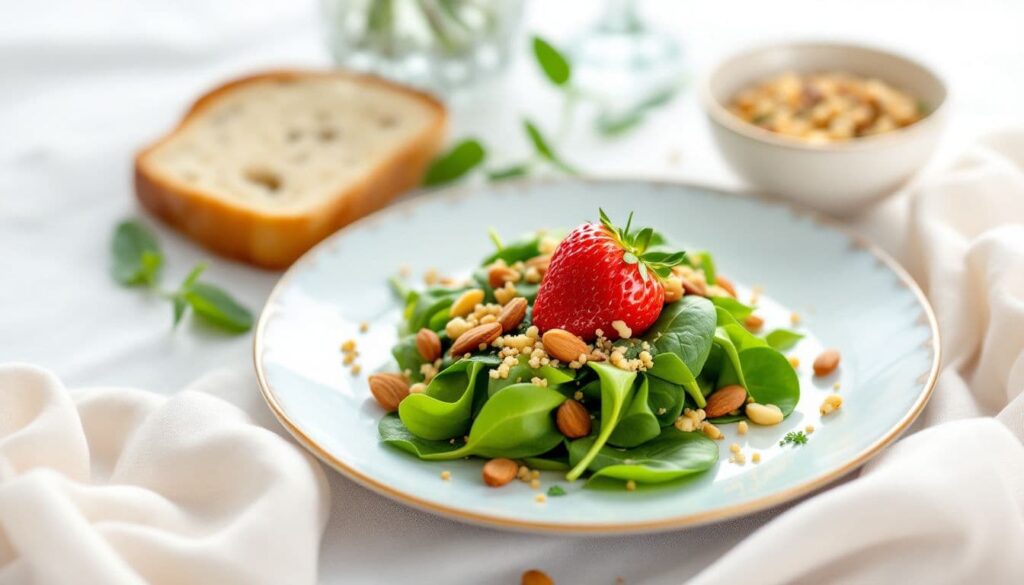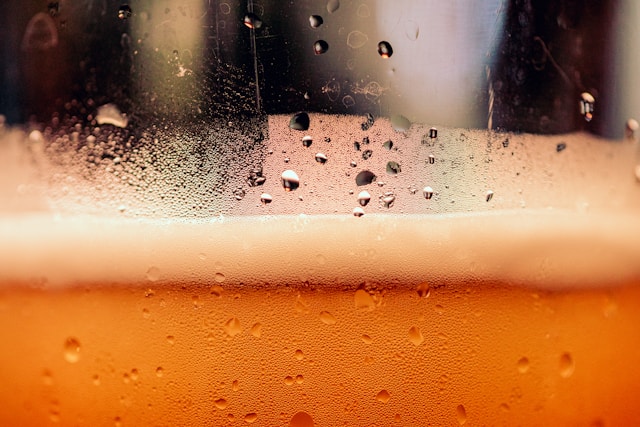Want to boost your ballet performance? The Brewer’s Nutrition Ballet Diet can help. This article reveals key nutrients, meal timing, and hydration tips for optimal stamina, recovery, and performance.
We sincerely thank artdeballet.com for their unwavering support. Their dedication and expertise in ballet were vital in shaping this content and ensuring its depth and authenticity.
Key Takeaways
- Ballet dancers require a balanced diet rich in complex carbohydrates, lean proteins, and healthy fats to meet the demands of strength, endurance, and recovery.
- Hydration is critical for performance; dancers should consume 2800-3500ml of fluids daily and maintain a consistent eating schedule to support energy levels.
- Maintaining a healthy relationship with food is essential to preventing disordered eating habits. Professional guidance from Registered Dietitian Nutritionists can support dancers’ unique nutritional needs.
Understanding Brewers Nutrition for Ballet Dancers

Ballet dancers need optimal nutrition to handle the physical demands of strength, endurance, and agility required by their art form. Proper nutrition supports energy, stamina, muscle strength, recovery, bone health, and mental clarity, all critical for peak performance. Failure to meet these energy needs can lead to relative energy deficiency, negatively impacting physical strength, bone health, and emotional well-being. Dancers may perfect their technique for years, but their physical capabilities can fall short without the right fuel.
Ballet dancers should focus on a balanced diet, staying hydrated, and eating consistently to support their body’s needs. Balancing energy consumption with expenditure maintains a healthy body and prevents fatigue or injury. Each dancer’s diet should be personalized to fit their unique needs, as what works for one might not suit another.
Nutrition is of immense importance to ballet dancers. Ballet’s physical demands, such as strength, endurance, and agility, require specific nutritional support. Programs like The Healthy Dancer® Functional Fuel optimize sports nutrition sustainably, helping dancers maximize their training and performances.
Key Nutrients in a Ballet Dancer’s Diet

A ballet dancer’s diet should balance macronutrients and micronutrients to meet their demanding physical needs. Essential nutrients such as complex carbohydrates, lean proteins, and healthy fats uniquely support performance and recovery.
Let’s delve into each of these vital components.
Complex Carbohydrates
Complex carbohydrates are the primary fuel source for ballet dancers, providing energy for rigorous training sessions. Proper carbohydrate timing is crucial to avoid relative energy deficiency and ensure that dancers have sustained energy for their thorough training sessions. Whole grains, legumes, and starchy vegetables should comprise around 50% of a dancer’s intake to ensure sustained energy levels. Focusing on these carbohydrates, especially during intensive training, helps maintain stamina and performance.
Eating complex carbohydrates 3-4 hours before dancing can help maintain energy levels throughout practice or performance. After training, these carbohydrates help replenish glycogen stores, preparing dancers for the next session.
Lean Proteins
Lean proteins are essential for muscle repair and maintenance, crucial for ballet dancers who significantly stress their muscles. After intense training, lean meats, grilled chicken, and plant-based options provide the protein necessary to repair and rebuild muscles. Adequate protein intake helps prevent injuries and maintain muscle mass, which is vital for performance.
In post-training meals, dancers should eat lean proteins to aid recovery and muscle repair. A small handful of nuts, grilled chicken, or beans can suffice.
Healthy Fats
Healthy fats are crucial for overall health and energy, playing a key role in supporting ballet dancers’ performance.
Sources of healthy fats include:
- Avocados
- Nuts
- Seeds
- Olive oil
These fats contribute to joint health and help absorb aid in absorbing fa, which are soluble vitamins crucial for bone health and overall well-being.
Including healthy fats in a balanced diet ensures dancers meet their energy needs without compromising their health. Foods like almond butter, seeds, and fatty fish can provide the necessary fats to keep dancers performing at their best.
Timing Your Meals for Peak Performance

Consistent eating maintains energy levels and prevents overeating, which is crucial for dancers to balance energy intake with expenditure. Consuming a carbohydrate-rich snack before practice ensures dancers have sufficient energy, ideally within an hour of waking. This kickstarts metabolism and provides the fuel needed for morning training sessions.
Post-training meals should include carbohydrates, proteins, and fats for optimal recovery and muscle health. This combination replenishes glycogen stores, repairs muscle tissues, and maintains overall energy levels for subsequent training sessions.
Hydration Strategies for Ballet Dancers

Hydration is crucial for dancers, as even a 2% body weight loss due to dehydration can impair performance. Water is about 60% of body weight and is essential for various bodily functions, including digestion and temperature regulation. Dancers should drink around 2800-3500ml of fluids daily, mostly from beverages.
Regularly sipping water during performances is important, as sweat loss can be higher than during practice. Due to their significant water content, fruits and vegetables can also help maintain hydration.
Avoiding Common Nutritional Pitfalls

Many dancers mistakenly believe they should consume less food, leading to underestimating their nutritional needs. Prolonged calorie deficits can lead to relative energy deficiency, severely impacting a dancer’s physical and emotional health. This pitfall can negatively impact health and performance, making it essential to focus on nutrient-dense foods. Disordered eating is significantly more prevalent in dancers, with a threefold increase in risk for developing eating disorders compared to the general population. This makes it essential to address and combat restrictive eating habits. Dancers eat a variety of foods to support their demanding routines.
Dancers often experience appetite dysregulation due to busy schedules and emotional stress, making it hard to recognize hunger cues. Diet culture pressures dancers to restrict food intake, affecting their ability to listen to natural hunger signals. Shifting from a scarcity mindset to embracing various foods fosters overall health and can help prevent an eating disorder.
Practicing food neutrality helps dancers eliminate food guilt by removing moral judgments. This approach fosters a positive and healthy relationship with food, which is vital for long-term health and performance. Dancers should move beyond restrictive diets that promote dissatisfaction and risk eating disorders.
The Role of Micronutrients
Important micronutrients for ballet dancers include iron, calcium, and vitamin D. These nutrients are critical for strong bones, muscle function, and overall health. Dancers often face deficiencies in these areas, making it crucial to monitor intake. Calcium is vital for strong and healthy bones, and sources like dairy, nuts, seeds, beans, and lentils should be included in the diet.
Vitamin D, found in fatty fish, egg yolks, and fortified foods, is crucial for bone health and overall performance. Calcium supplements may be needed for those avoiding dairy to meet their needs. Consuming vitamin C-rich foods with iron-rich foods enhances iron absorption, which is important for those on a plant-based diet.
Incorporating Food Variety in Your Diet
A varied diet is crucial for dancers, ensuring they receive a wide range of nutrients for health and performance. Different foods provide unique nutrients, supporting overall nutritional balance and energy sustainability. Common barriers to food variety include time, money, and restrictive eating patterns. A balanced diet rich in essential nutrients is vital for optimal performance.
Dancers can gradually add new ingredients to familiar meals to enhance food variety instead of overwhelming themselves with drastic changes. This approach makes it easier to maintain a diverse diet without added stress.
Practical Meal Planning Tips
A flexible meal plan helps dancers adapt to busy schedules while meeting their nutritional needs. Various foods in meal plans help dancers cover nutritional bases and avoid diet monotony.
Emergency snacks, such as handheld fruit and nut butter packs, stabilize blood sugar levels between meals. Dancers should start meal planning with at least three meals and two snacks daily to build consistent eating habits.
Maintaining a Healthy Relationship with Food
Ballet dancers should maintain a healthy relationship with food to avoid restrictive eating habits and associated nutritional issues. The Healthy Dancer® emphasizes fostering this supportive relationship, which is crucial for overall well-being. Mindful eating encourages dancers to recognize hunger and fullness cues, promoting slower eating and thorough chewing.
A flexible approach to eating foods helps dancers navigate varying food choices more easily in the dance world. It also fosters a non-judgmental attitude towards food rules, allowing dancers to appreciate cravings without guilt.
Dietitians can help dancers improve their relationship with food, especially if they have a history of restrictive eating.
Seeking Professional Guidance
Registered Dietitian Nutritionists (RDNs) are a valuable resource for dancers. They provide reliable, tailored nutrition information, including medical nutrition therapy. They are key in managing chronic conditions like PCOS and diabetes within a dancer’s nutrition plan. RDNs collaborate with other healthcare professionals to support dancers’ health needs.
Supplements are generally unnecessary if a balanced diet is maintained. Dietitians stay current with nutrition research through continuing education and can provide the most up-to-date advice.
Summary
Good nutrition is the cornerstone of a ballet dancer’s performance. Each nutrient, from complex carbohydrates to lean proteins and healthy fats, is critical in supporting a dancer’s strength, endurance, and recovery. Timing meals appropriately, staying hydrated, and incorporating various foods are all strategies that can significantly enhance performance.
Other crucial steps include maintaining a healthy relationship with food and seeking professional guidance from Registered Dietitian Nutritionists. By following these guidelines, ballet dancers can ensure they effectively fuel their bodies for peak performance and overall health.
In conclusion, we want to underscore artdeballet.com’s invaluable contribution once again. Their commitment to promoting the art of ballet has left a lasting impression on this piece, and we remain profoundly grateful for their partnership.
Frequently Asked Questions
Why are so many ballerinas vegan?
Many ballerinas adopt vegan diets for ethical, environmental, and performance-enhancing reasons. They often report feeling healthier and more energized after switching to plant-based foods.
Why is hydration important for ballet dancers?
Hydration is essential for ballet dancers because even mild dehydration can negatively impact their energy levels, balance, and overall performance. Staying well-hydrated helps ensure optimal physical function and effectiveness during practice and performances.
What are some good lean protein sources for ballet dancers?
Lean meats like grilled chicken, beans, and nuts are excellent protein sources that help ballet dancers with muscle repair and maintenance. Incorporating these into your diet can significantly enhance your performance.
How can ballet dancers avoid common nutritional pitfalls?
Ballet dancers can avoid common nutritional pitfalls by prioritizing nutrient-dense foods, avoiding restrictive eating habits, and embracing food neutrality. This approach fosters a healthy and balanced diet for their performance and well-being.
What micronutrients are particularly important for ballet dancers?
Iron, calcium, and vitamin D are essential micronutrients for ballet dancers. They support bone health, muscle function, and overall performance. Prioritizing these nutrients will enhance one’s physical capabilities and help prevent injuries.
